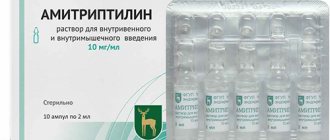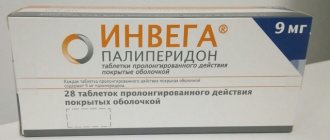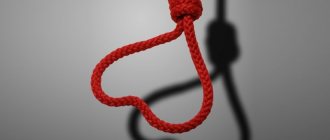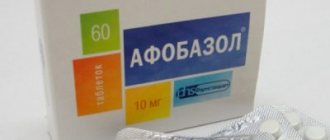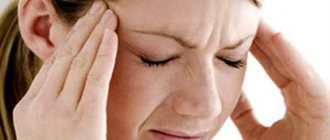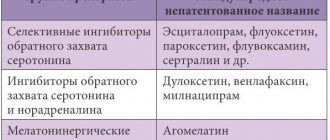Use of barbiturates
The barbiturate was first synthesized by the German scientist Adolf Bayer on December 4, 1864. The name of barbiturates is associated with this date - allegedly, the scientist named the substance in honor of the day of St. Barbara (Barbara). And according to other sources, Adolf named the discovery in honor of the girl he was in love with.
The discovery remained in the shadows for a long time until doctors paid attention to it. So, since 1903, the first drug, Veronal, began to be used by psychiatrists to treat stress and insomnia. Over the next 60 years, doctors noticed evidence of drug abuse - patients developed a strong dependence, depression appeared when they refused the drug. In the 1960s, after the publication of the first major studies on this topic, the use of barbiturates in medicine began to decline.
Now Phenobarbital, Bellataminal, Reladorm, Pentobarbital, Etaminal sodium, Nembutal and other potent drugs based on barbituric acid are included in the list of potent substances in Russia and are sold in pharmacies only with a doctor’s prescription. Their main indications are: insomnia, muscle spasms and cramps, anxiety and panic attacks.
However, drugs with low concentrations of barbiturate substances - for example, Valocordin, Corvalol, Barboval, Valoserdin - can be bought without a prescription. This causes abuse not only among young people, but also among older people. They begin to take “calming drops” for anxiety, heart pain - and do not notice the formation of drug dependence.
Barbiturates – what are they?
A fairly large group of barbituric acid derivatives have become medicines.
They are called barbiturates. The first representative of the family and a weapon in the hands of psychiatrists was Veronal, used back in 1903. Ten years later, the stronger Phenobarbital appeared. Since then, the list of barbiturate drugs that depress brain centers has often been replenished and expanded. Now it contains three pharmacological groups divided by duration and speed of action:
- Kemital, Cyclobarbital, Thiopental and other drugs that are interesting to anesthesiologists cause sleep for 3-4 hours within 15 minutes after administration.
- Medium-duration barbiturates, revered by psychiatrists, are Seconal, Amytal, Nembutal. In international drug jargon, these substances received more eloquent names - “Red Devils”, “Green Dragons”.
- Long-term anti-epilepsy drugs – Phenobarbital and analogues.
Mechanism of action
Barbiturates are quickly absorbed into the blood through the gastrointestinal tract and easily cross the blood-brain barrier of the brain. So they begin to directly affect the central nervous system: they stimulate the production of the inhibitory transmitter GABA (gamma-aminobutyric acid), and suppress the work of key brain neurotransmitters responsible for the active functioning of the nervous system - serotonin, dopamine, norepinephrine.
Due to this, barbiturates inhibit the transmission of nerve impulses in the central nervous system and have a powerful inhibitory effect on its functioning.
Barbiturates as a drug
Slang names for barbiturates, common among drug addicts: barbiturate, h barbie, trunk, durbazol, atom, hairdryer.
Initially, drug addicts began using barbiturates to relieve withdrawal symptoms after using hard drugs such as heroin, methadone and other opiates. The powerful hypnotic effect made it possible to fall asleep and not experience phantom pain, cramps and other withdrawal symptoms.
But over time, the drug began to be taken as an independent or additional drug.
Effects of barbiturates when the therapeutic dosage is exceeded:
- Euphoria, feeling of bliss and peace
- Lightness in the body
- Mild visual and auditory hallucinations
- Delayed perception of time
- Feeling of a surge of energy with temporary stimulation of motor activity, increased talkativeness
- Transition of euphoria to deep sleep
Reviews of drug addicts about barbiturism on addiction forums
Even over-the-counter drugs with a low content of barbiturates - Valocordin, Corvalol - when the dosage is exceeded, can cause mild euphoria, a sense of calm and deep sleep. Therefore, drug dependence on them is common among older people and other social groups who take drugs to combat stress and insomnia.
Review of a drug addict about the psychotropic effect of Corvalol
Effect of Phenobarbital on the body
The drug has an effect on the cerebral cortex and inhibits the functioning of the thalamus. Due to this, a pronounced hypnotic and sedative effect occurs. Its anticonvulsant activity is achieved by reducing neuronal excitability provoked by psychotropics or an existing mental disorder.
The sleep that occurs after using the drug Phenobarbital is very different from normal physiological sleep. Thus, the duration of the REM sleep phase is reduced, as are the third and fourth stages of slow sleep. The structure of human night rest is undergoing dramatic changes. The hypnotic effect appears within an hour after taking the medicine and lasts up to 8-12 hours. But after two weeks of regular use of Phenobarbital, its hypnotic effect becomes weaker.
If you combine the medication with antispasmodics, you will be able to quickly achieve positive dynamics in neurovegetative pathologies. The drug can reduce the activity of metabolic reactions and inhibit the main centers of thermoregulation. Because of this, the drug addict’s body temperature drops significantly.
Methods of administration and speed of action
The main narcotic effect of barbiturates is euphoria, which lasts from 30 minutes to 2 hours. And the hypnotic effect lasts much longer - 15-30 hours.
Directions for use:
- Orally. Drug addicts drink large quantities of tablets at one time, often crushing the tablets into powder to speed up absorption.
Speed of action: from 30 min. up to 2 hours
- Injection. The tablets, ground into powder, are mixed with purified water or saline and injected into the muscles or veins.
Speed of action: 1-3 minutes (intravenous), 5-10 minutes (intramuscular).
Kinds
There are several types of barbiturates.
- Short-acting drugs. They are often used for anesthesia; the solution is injected into a vein. The effect lasts up to 30 minutes.
- Medicinal products of medium duration are used to combat insomnia and atherosclerosis.
- Long-term medications relieve seizures and help treat epilepsy.
When taken without a doctor's prescription or in excess of dosages, they form an addiction, which is extremely difficult to get rid of.
Side effects
Already after the first abuse of barbiturates, the addict experiences extremely unpleasant side effects:
- Feeling very tired
- Weakness in the body, “cotton” legs
- Dry mouth or increased salivation
- Hand tremors, muscle twitching, cramps
- Impaired coordination of movements
- Headache, pressure surges
- Nausea, vomiting, abdominal pain
- Insomnia or excessive sleepiness with light sleep
- Anxiety, irritability
- Depressed mood
With one-time abuse, side effects persist for up to 4-5 days, and after 2-4 regular doses they can last up to 2 weeks.
Review of a drug addict about the psychotropic effect of Corvalol
How does withdrawal proceed?
After just a few cases of taking barbiturates, a person begins to develop persistent physical and psychological dependence.
These drugs cause severe withdrawal, similar to both alcohol and heroin. It appears already on the first day without a dose and develops in several stages with a gradual accumulation of symptoms:
- Day 1 – depressed anxious and melancholy mood, sleep disorders, short temper and irritability, touchiness, tearfulness.
- Day 2 – increased sweating, intestinal dysfunction, anxious sleep with nightmares.
- Day 3 – sleep disturbances up to complete insomnia, motor restlessness, tremors in the limbs, deep depression with suicidal tendencies.
- Day 4 - peak of withdrawal syndrome - severe weakness, dizziness, nausea and vomiting, visual distortions, heart pain and strong downward pressure surges, pain in muscles and joints, involuntary muscle twitching, convulsive seizures, acute psychosis with seizures aggression, inappropriate behavior.
All these symptoms continue with moderate or severe intensity from 10 days to 2-3 weeks, depending on the length of use. Due to its severe course, barbiturate withdrawal can lead to the death of the patient.
Reviews of drug addicts about barbiturate withdrawal on forums
Content:
- Effect of Phenobarbital on the body
- Effect on humans of Phenobarbital used in high doses
- When narcotic medicine is strictly prohibited
- How addiction develops
- How to understand that a person is “sitting” on Phenobarbital
- What does phenobarbital addiction lead to?
- How to deal with addiction
Phenobarbital drug addicts use it for a reason.
It quickly causes physical dependence if used uncontrollably. The drug belongs to the pharmacotherapeutic group “Anticonvulsants” and is a representative of barbiturates. Prescribed to patients with various forms of epilepsy, with the exception of absence seizures. Also, sometimes narcologists prescribe it to alcoholics suffering from painful withdrawal symptoms. Shows pronounced hypnotic and sedative properties.
Symptoms of use
It is easiest to identify a barbiturate addict when intoxicated - by their characteristic appearance, behavior and well-being:
- A state similar to alcohol intoxication, but without signs of alcohol
- Pupils are normal size but constrict slowly in bright light
- The gaze darts and has difficulty focusing on one object
- Slow movements, speech and reaction speed - or, conversely, strong motor agitation
- Increased sleepiness
- Loss of coordination, unsteady gait
- Reasonless, detached smile, fits of laughter
- Difficulty controlling emotions
The characteristic symptoms of systematic use may also be alarming:
- Constant fatigue, lethargy
- Sleep disorders - alternating periods of increased sleepiness and insomnia
- Hand trembling, complaints of muscle pain
- Pale skin with a dirty earthy hue, purulent rashes
- Irritability, short temper, attacks of aggression or crying
- Depression, lack of motivation
- Decreased work and educational activity
- Distance from loved ones, craving for solitude
- Frequent visits to the pharmacy, empty packages and blisters of pills, doctor’s prescriptions
- Untidy appearance, poor personal hygiene
Tests for barbiturates
The most accessible and popular among drug addicts are drugs based on phenobarbital - including Bellataminal, Barboval, Valocordin and Corvalol. These are long-acting barbiturates with a long half-life and elimination from the body:
- In the blood – up to 7 days
- In urine – from 2 to 4 weeks
- In hair and nails – up to 1-2 months
In addition, barbiturates have a cumulative effect. The longer the addict takes the drug, the higher the concentration of its metabolites in the biomaterial.
Due to the long-term elimination of barbiturates, pharmacy rapid tests can be used to identify a drug addict. Both individual strips and test plates are suitable for testing for several types of drugs at once - after all, barbiturates are often combined in injections with heroin and other opiates.
But rapid tests have a number of disadvantages - they often give a false negative result, and they can be deceived by replacing urine or blood. They also will not be able to show the concentration of the substance or establish the degree of dependence, and they cannot be used in court.
Therefore, for greater reliability, relatives of addicts turn to the laboratories of drug treatment clinics to conduct a chemical toxicological study (CTS). Laboratory staff can test not only the urine, but also the blood, nails and hair of the drug addict. They will also determine the degree of intoxication and duration of dependence.
Consequences of use
Dependence on barbiturates – barbiturism – has a destructive effect on the most important systems of the body:
- The cardiovascular system. Chronic bradycardia and hypotension. With injections - inflammation and destruction of the walls of blood vessels, the formation of blood clots, an increased risk of stroke and heart attack.
A story from a drug addict on an addicts forum about the effects of barbiture on the heart
- Respiratory system. Bronchial spasms, chronic respiratory depression and lack of oxygen, risk of death from suffocation.
- Liver. Toxic damage and destruction of liver cells, development of cirrhosis and hepatitis, risk of coma and death from liver failure.
Reviews from addicts about the consequences for the liver
- Immunity. Impaired hematopoiesis, decreased production of leukocytes and platelets, suppressed immunity. Increased risk of contracting hepatitis, HIV and other infections when injecting.
But barbiturism causes the greatest damage to the functioning of the brain and psyche:
- Toxic brain damage, neuronal destruction, intellectual personality degradation
- Chronic depression of cognitive functions of the brain - thinking, memory, concentration, speech
- Violation of the reward mechanism, lack of motivation
- Suppression of moral and ethical standards of behavior, moral degradation
- Suppression of facial expressions, simplification of emotional reactions (emotional degradation)
- Development of anxiety, panic disorder and depression, acute psychosis with inappropriate behavior
Reviews from addicts about the consequences for the liver
Analogs
Nowadays, barbiturism is quite rare, but was widespread in the 90s. A similar structure of anesthesia is observed with dependence on benzodiazepines (tranquilizers). From the pharmaceutical group, the following drugs have a similar effect:
- "Barboval";
- "Etaminal-sodium";
- "Phenobarbital";
- "Benzonal";
- "Thiopental";
- "Methohexital".
The concentration of active compounds in different drugs varies. For example, even a one-time dose of Thiopental may be the last due to acute blockage of the respiratory center.
Long-acting barbiturates are sold only with special prescriptions from a doctor, making recreational use difficult.
After the withdrawal of benzodiazepines, as well as after the withdrawal of barbiturates, convulsive seizures and psychosis may be observed, with agitation, hallucinations, increased anxiety-depressive symptoms, and depersonalization phenomena. It should be noted that the development of withdrawal syndrome does not necessarily imply the presence of tolerance and vice versa. The patient’s mood plays an important role in the development of both withdrawal syndrome and rebound insomnia.
Poluektov M.G., Pchelina P.V. “Insomnia against the background of dependence on sleeping pills” State Budgetary Educational Institution of Higher Professional Education “First Moscow State Medical University named after. THEM. Sechenov" of the Ministry of Health of Russia, Moscow. 2021.
Barbiturate overdose
Barbitusism has several factors that increase the risk of overdose:
- Rapid growth of tolerance. The need for a constant increase in dosage appears within the first 2-3 months of addiction when taken orally, and the first month when taken by injection. This is how drug addicts cause severe intoxication.
A drug addict talks about the rapid growth of tolerance on the forum
- Rapid decrease in tolerance. With a temporary cessation of barbiturates, tolerance to the drug drops sharply - and the usual large dose taken after several weeks of abstinence turns out to be too high.
- Drug mixes. Barbiturates are often drunk with alcohol, and are also mixed with opiate drugs (Heroin, Morphine, Methadone) to enhance the effect.
Drug addicts - about combinations of barbiture with other drugs
- Impaired consciousness due to insomnia. With barbiturism, the patient develops persistent insomnia with impaired thinking. In an attempt to get rid of it and fall asleep, the addict drinks new doses of sleeping pills one after another.
- Injection. A high risk of overdose is also associated with intravenous administration - a drug addict may inject himself with too large a dose, or fall asleep during the process of injecting the syringe due to the powerful hypnotic effect.
A drug addict talks on the forum about deaths caused by barbiturate injections.
Symptoms of barbiturate overdose:
- Nausea and vomiting
- Increased salivation, pain in the eyes, hiccups
- Heavy sweating, chills
- Severe dizziness, loss of consciousness
- Reduced heart rate and decreased blood pressure
- Weak, shallow breathing
The main cause of death from barbiturate intoxication is cardiac and respiratory arrest. Also, a drug addict can die from liver failure, due to accidents and injuries due to loss of consciousness.
If you identify symptoms of an overdose in a loved one, you need to urgently call an ambulance and provide the patient with first aid:
- Restore heart function. If the patient has no pulse and no breathing, it is first important to restore the heart's function. Place the patient on a hard floor, place your palms one on top of the other in a lock in the area of his solar plexus. Now do rhythmic pressure on the chest - not with your fingers, but only with the bases of your palms - with a frequency of 100-110 pushes per minute. Repeat until the pulse returns.
- Restore breathing. If there is a pulse, but the patient is not breathing, artificial respiration must be performed. Use your finger to remove any remaining vomit, mucus, or blood from the patient's mouth and check and clean the nasal passages. Place a cloth on the victim's lips, pinch his nose, and perform ri. The first 5-10 breaths should be fast - in 25-30 seconds, the next - 12-15 breaths per minute.
- Don't let yourself choke on vomit. If the patient is conscious, but is suffering from vomiting, it is important to put him on the floor and turn him on his side to facilitate the outflow of vomit and prevent injury and suffocation in the event of a sudden loss of consciousness.
Stories from drug addicts about the experience of barbiturate overdose
- Give more water, do not give medications. To speed up the elimination of barbiturates, you can give the addict purified water. But it is better to refuse medications until the doctor arrives - a weakened liver may not be able to withstand the additional load. If you think this is necessary, you can ask the doctor a question while calling an ambulance.
- Do not hide the reasons for what is happening from the doctor. When calling an ambulance and upon arrival of the doctor, you should not hide the cause of the acute condition - accurate knowledge of what is happening will help the doctor not waste time and provide appropriate, effective assistance.
Modern representatives
The list of modern barbiturates that can still be found on sale includes the following drugs:
- Luminal (Phenobarbital) has a phenolic ring in its molecule and has the most powerful and long-lasting effect. Death occurs when 800-1000 mg of the drug is consumed. Widespread due to its effective effect during epileptic seizures.
- Amutal belongs to the group of strong and long-lasting barbiturates. However, the lethal dose is much less than that of the previous representative - 100-250 mg.
- Librium is not the strongest tranquilizer. Due to its relative safety, it is easiest to purchase in pharmacies. Prescribed by doctors for insomnia and neuroses.
- Seconal is known for sales on black markets and is not used in medicine. The release form is 32 mg tablets, and death occurs after 150 mg of the medicine taken.
- Terazine is used as a powerful narcotic. From the first use it becomes extremely addictive. Despite this, it is used in psychiatric clinics to suppress the activity of particularly violent patients. The usual dose is 25 mg.
- Valium is a mild tranquilizer with a wide range of uses.
Addiction treatment
The average life expectancy of barbiturate drug addicts is 2-3 years. The main reason for the high mortality rate is persistent addiction with severe withdrawal symptoms and a high risk of overdose and suicidal tendencies.
At the same time, the craving for the drug is not only physical, but also psychological - the addict vividly remembers the euphoria from taking barbiturates and continues taking them at any opportunity.
Reviews of drug addicts about barbiturate withdrawal on forums
Therefore, to treat barbiturism, it is not enough to put the patient on a drip and cleanse the body of the drug and overcome physical withdrawal. It is extremely important to eradicate psychological cravings for the substance. And for this, a drug addict needs comprehensive psychosocial rehabilitation.
Stages of treatment:
- 1st month. Admission to a drug treatment hospital. A detoxification course to cleanse the body of barbiturates and their breakdown products, drug therapy to normalize and protect the functioning of the heart, liver and other internal organs. Normalization of sleep and nutrition.
- 2-6 months. Deep work on psychological addiction using advanced methods of psychotherapy. Classes alone with a psychotherapist and in groups. Search and elimination of psychological traumas and complexes - the root causes of interest in drugs. Increasing stress resistance, skills to control and correct your emotions and behavior. Training in relapse defense techniques. Restoring trusting relationships with loved ones.
- 7-12 months. Transition to outpatient psychotherapy sessions. Honing self-control skills, independent work on addiction prevention with the support of clinic specialists. Restoring healthy life values, forming plans and goals for life. Searching for a new job, a sober environment and ways to relax. A full return to a sober social life.
